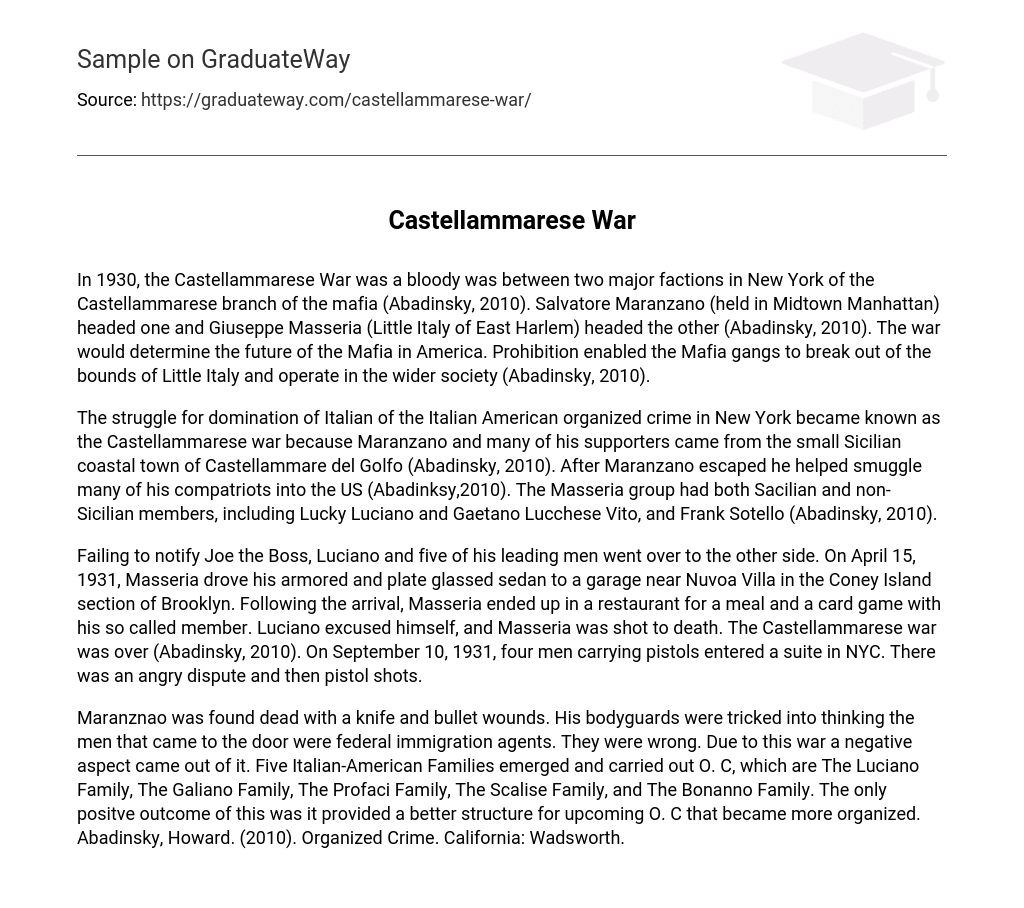In 1930, the Castellammarese War in New York was a violent conflict between two major factions of the Castellammarese mafia (Abadinsky, 2010). One was led by Salvatore Maranzano, based in Midtown Manhattan, and the other by Giuseppe Masseria in Little Italy of East Harlem (Abadinsky, 2010). This war had significant implications for the future of the Mafia in the United States. Thanks to Prohibition, the Mafia gangs were able to expand beyond Little Italy and operate within wider society (Abadinsky, 2010).
The conflict for control of Italian American organized crime in New York was referred to as the Castellammarese war because Maranzano and his supporters hailed from the small Sicilian coastal town of Castellammare del Golfo (Abadinsky, 2010). Maranzano facilitated the smuggling of many of his countrymen into the US after his escape (Abadinksy,2010). The Masseria group consisted of both Sicilian and non-Sicilian members, such as Lucky Luciano, Gaetano Lucchese Vito, and Frank Sotello (Abadinsky, 2010).
Without notifying Joe the Boss, Luciano and five of his top men switched sides. On April 15, 1931, Masseria took his armored and plate glassed sedan to a garage near Nuvoa Villa in Brooklyn’s Coney Island area. Upon arrival, Masseria went to a restaurant for a meal and a card game with his supposed associates. Luciano left the scene, and Masseria was killed by gunshots. This marked the end of the Castellammarese war (Abadinsky, 2010). On September 10, 1931, four armed men entered a suite in New York City. An intense dispute ensued, resulting in gunshots being fired.
Maranznao was discovered deceased with knife and gunshot injuries. His bodyguards were deceived into believing that the individuals appearing at the door were federal immigration agents, though they were mistaken. As a result of this conflict, a negative result materialized. Five Italian-American Families surfaced and conducted O.C, namely The Luciano Family, The Galiano Family, The Profaci Family, The Scalise Family, and The Bonanno Family. However, the sole positive consequence was that it provided a more organized framework for future O.C. (Abadinsky, Howard. 2010. Organized Crime. California: Wadsworth.)





